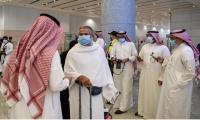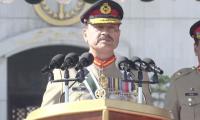PESHAWAR: It’s budget season again and as has been the case over the past few years, there is now an insatiable focus on own source revenue and departmental reforms to help bolster tax collection.
At the provincial level, the Excise and Taxation (E&T) department is one of the few key departments that share this responsibility. Over the course of the last year, starting with the 2020-21 Khyber Pakhtunkhwa (KP) provincial budget, the KP Excise & Taxation Department, unnoticed by many, embarked on an aggressive reforms agenda that would allow the department to reach its true collection potential.
Over the last decade, the E&T departments in Punjab, Sindh and at the federal level have to various degrees automated and modernised their processes. In KP, however we realised it was an area where we were lagging behind.
To kickstart the reforms agenda, the KP E&T department conducted an in-depth internal analysis with the help of SEED (a programme funded by FCDO) and CDPR (an economic think tank based in Lahore) and came to the following key realisations: the department was essentially collecting eight different taxes thereby limiting its capacity to concentrate on the most significant ones, the processing systems were administered independently at the district level with lax central oversight capability, and most of the records were being maintained in manual form which were updated through sporadic staff field surveys which limited modernising processes. These limitations had further consequences on issues related to collection, transparency, ease of doing business, and citizen facilitation.
To realign the department’s focus and to relieve KP citizens from being overwhelmed by the sheer number of taxes, in the finance bill 2020-21 the E&T department reduced the scope of many of the eight taxes being collected. In the case of some taxes, like entertainment duty, where collection costs were more than the amount being collected, they were repealed altogether.
In the case where it was determined there was dual taxation such as, professional tax, hotel bed tax, motor vehicle and real estate dealers’ tax, they were greatly limited in their scope with the idea of eventually phasing them out. Any individual/business registered with KP Revenue Authority (KPRA), where similar tax was being collected, would not have to pay any of these taxes with the E&T department.
In addition to giving relief to citizens these reforms also allowed the department to concentrate primarily on two key revenue collection sources with the highest potential, urban immovable property tax (UIPT) and motor vehicle registration/token payments.
UIPT payments go towards municipal services, but an internal survey supported our theory that some resistance towards paying UIPT exists because residents don’t see these funds being spent on them. Therefore, the law was amended to ring-fence UIP taxes to be spent within the territory from which they are collected. In order to get taxpayers involved, a feedback system was established so from the coming year local recommendations for spending in their communities would be gathered.
The ultimate aim is to have an MIS system integrated with GIS maps of KP’s urban centers. Learning from the strengths and limitations of the MIS system used in Punjab, the department hired Urban Unit to develop such a system for KP.
At the same time, the GIS survey in Peshawar was expedited and completed which is a huge step towards mapping of all urban properties in the province as Peshawar constitutes more than 70 percent of the total urban units. At the same time, work on digitisation and making GIS maps for Abbottabad and Nowshera districts were started and workplans, funding and partners were finalised to complete GIS maps of all remaining cities of the province over the course of the next year.
While complete automation of UIPT is still a year away, in the immediate term two interventions were introduced to help bring more transparency into the system. First, a self-assessment programme was introduced, whereby based on the formula/rates circulated on the department’s website, individuals and businesses could calculate their own UIP taxes and deposit the amount. Second, instead of the traditional one-line challans, district offices were asked to disburse challans with detailed calculations at the back so that taxpayers could verify the amount as well.
At the same time, keeping in mind the impact of Covid-19 on the payment capacity of citizens and to broaden the tax base rather than overburden existing taxpayers, rates for most taxes were heavily reduced; in the case of some businesses the reductions were as much as ten-fold.
The most impressive part has been that while implementing this ambitious reforms agenda the department this fiscal year has increased UIPT collection by 93 percent, which in turn has meant that in spite of cutting back on the majority of the taxes the department is collecting and reducing rates across the board.
The department is on track to achieve more than the target amount set at the start of the year, a rarity for revenue collecting departments in Pakistan. A longer-term study to make the UIPT regime fairer has also been launched, whereby the tax would be calculated on a value-based system as opposed to on measurement or rental basis.
On improving the car registration/token collection regime, the problem is straight forward yet more challenging. There is a need to rebrand the KP plate number to attract vehicles being driven on the roads of KP to register in the province, as studies show that upwards of 80 percent of vehicles are registered outside of the province.
To do this the first step was to digitize all our records and centralise them. This has successfully been done and to facilitate citizens, through the support of SNG programme, an e-payment system has been developed with the soft launch done in March 2021. Soon citizens will be able to view and pay their outstanding token challans from the comfort of their homes.
The digitisation of data and centralisation of processes means a new universal plate number can be launched over the course of the next year. The introduction of a smart card and a universal plate number with security features comparable to international standards should build the confidence of KP residents to register in the province and contribute towards much needed revenue that will pay for maintenance of our road infrastructure.
The last fiscal year has been transformative for KP Excise & Taxation department and it is important to highlight and appreciate the dedicated work put in by the staff that has historically been wrongly accused of being anti-reforms. Given the opportunity the willingness is there and it can be said that this continued improvement over the course of the next year will demonstrate that KP Excise & Taxation department can become a beacon of change for other departments to replicate.
The writer is member of the provincial assembly of Khyber Pakhtunkhwa
The headquarters of the Sui Southern Gas Company . — APP FileKARACHI: Sui Southern Gas Company has launched a fresh...
The logo of the ExpoMed Eurasia. — CA MI websiteKARACHI: Pakistan is participating in ExpoMed Eurasia, a leading...
Gold bars are seen in this undated file photo. — AFP/FileKARACHI: Gold prices increased by Rs500 per tola on...
FFBL Head Office building can be seen in Islamabad. — FFBL WebsiteKARACHI: Fauji Fertilizer Bin Qasim Limited has...
Representational file of an BMW car. — AFP FileLAHORE: Small improvements in economic credentials of the country are...
A fuel station worker filling petrol in vehicle at a fuel station in Karachi on Tuesday, April 16, 2024KARACHI: After...







